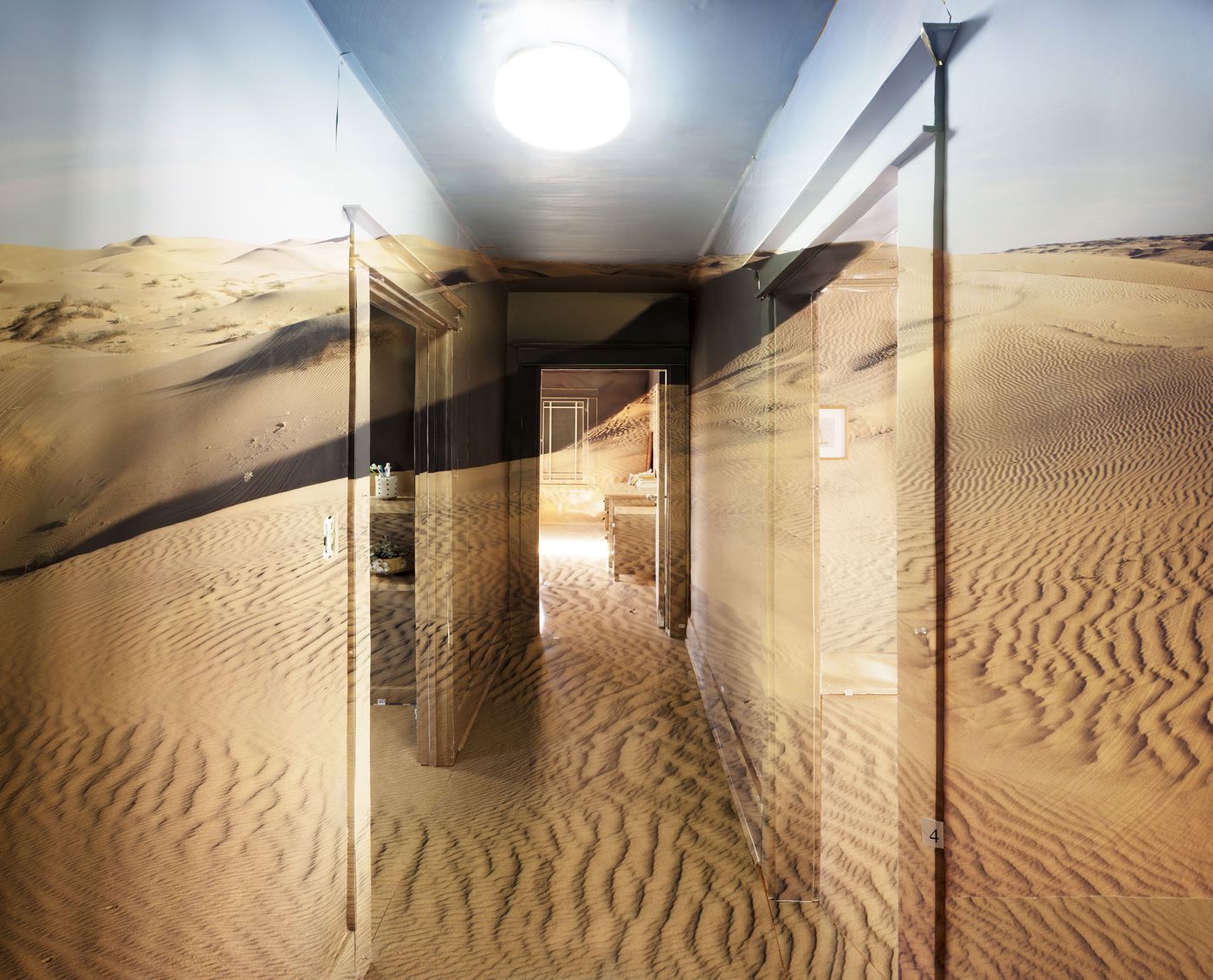
Our Longing for Adventure & Shelter Merge in Chris Engman's Hallucinatory Photographs
Words by Eric David
Location
Our Longing for Adventure & Shelter Merge in Chris Engman's Hallucinatory Photographs
Words by Eric David
To say that Los Angeles-based artist Chris Engman’s photographs are trompe l’oeil illusions would be a gross understatement. Created through an elaborate and time consuming physical process, his work evocatively merges indoor and outdoor environments into mesmeric compositions that both perturb and dazzle viewers with their non-binary disposition. Titled Prospect and Refuge, Engman's series is inspired by what British geographer Jay Appleton believed to be two of our most basic and deep-rooted needs: our longing for opportunity and shelter. In Engman’s work these two subconscious urges are metaphorically conveyed by images of expansive natural landscapes and familiar man-made interiors. Their hallucinatory fusion into a single photograph not only alludes to the paradoxical nature of the human psyche but also questions the function of photographs as records of truth.
For Engman, the conflicting interrelationship between these two human needs has a resonating correspondence to the intrinsic interplay between materiality and illusion in the medium of photography. When he talks about illusion in photography Engman is “referring broadly to the power we invest in photographs to tell us the truth about the world, to be a record of it”, whereas materiality refers to “the stuff of photographic objects, their actual truths: ink, paper, frame, and physical context”. The tension that arises between them has directly informed the artist’s creative process, most notably by the different ways he uses paper to construct his illusionary images.
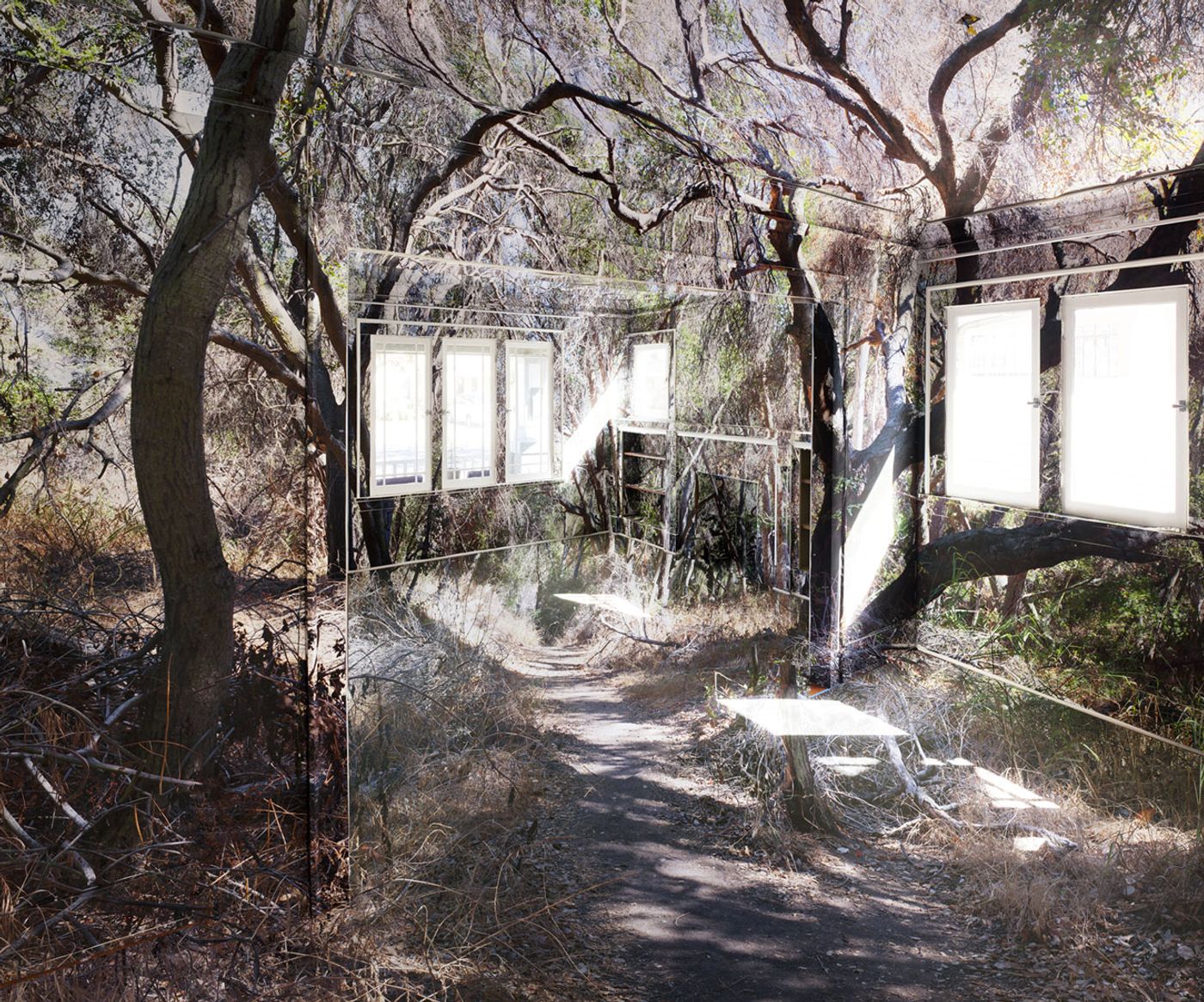
Chris Engman, Refuge, 2016. Edition of 6. Pigment print. 43 x 53 in (109.2 x 134.6 cm). Image courtesy of the artist and Luis De Jesus Los Angeles.

Chris Engman, Prospect, 2016. Edition of 6. Pigment print, 43 x 55.5 in (109.2 x 141 cm). Image courtesy of the artist and Luis De Jesus Los Angeles.

Chris Engman, Landscape for Candace, 2015. Edition of 6, Pigment print, 43 x 55.5 in (109.2 x 141 cm). Image courtesy of the artist and Luis De Jesus Los Angeles.
Initially the photograph of the selected landscape is printed onto hundreds of pieces of paper which are then physically cut and affixed to walls and objects within the chosen architectural space—for example more than 150 segments had to be printed in order to construct Refuge (2017), a depiction of a dusty trail through an unkempt wooded area. It is a laborious, painstaking and time-consuming process since it requires cutting every printed photograph into custom shapes in order to be perfectly aligned when wrapped around chairs, door frames and roof beams. Finally, the space is photographed from a certain vantage point and the picture is itself printed onto a single sheet of photo paper. In effect, Engman’s astounding photograph-within-a photograph technique uses paper both as a physical medium and as an instrument of illusion.
In the same way that the illusion in Engman’s work depends on the materiality of the paper he uses, our needs for opportunity and shelter are interlinked. Despite being contradictory, they are not mutually exclusive; in fact they reinforce each other: we tend to seek adventure when we have a refuge to retreat to, and we long for shelter when faced with the unknown. This is why the artist's chimerical landscapes are such a perceptual tour-de-force: although we perceive that something is not quite right—fluorescent lamps floating in a dense forest, a seascape existing within a garage, or a tree growing inside a studio—we refuse to believe that what we are actually seeing is not real.
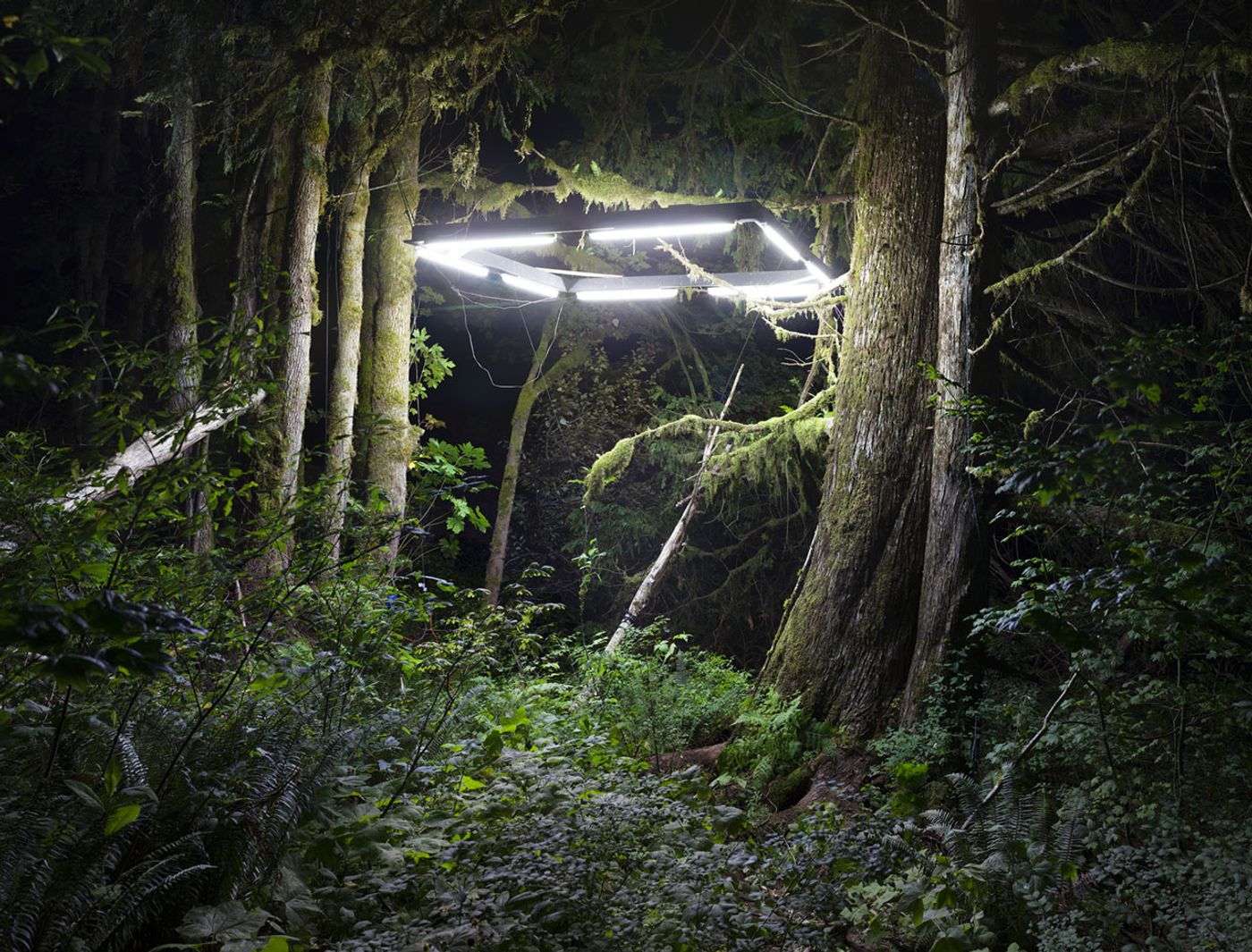
Chris Engman, Shelter, 2016. Edition of 6. Pigment print, 38 x 50 in (96.5 x 127 cm). Image courtesy of the artist and Luis De Jesus Los Angeles.
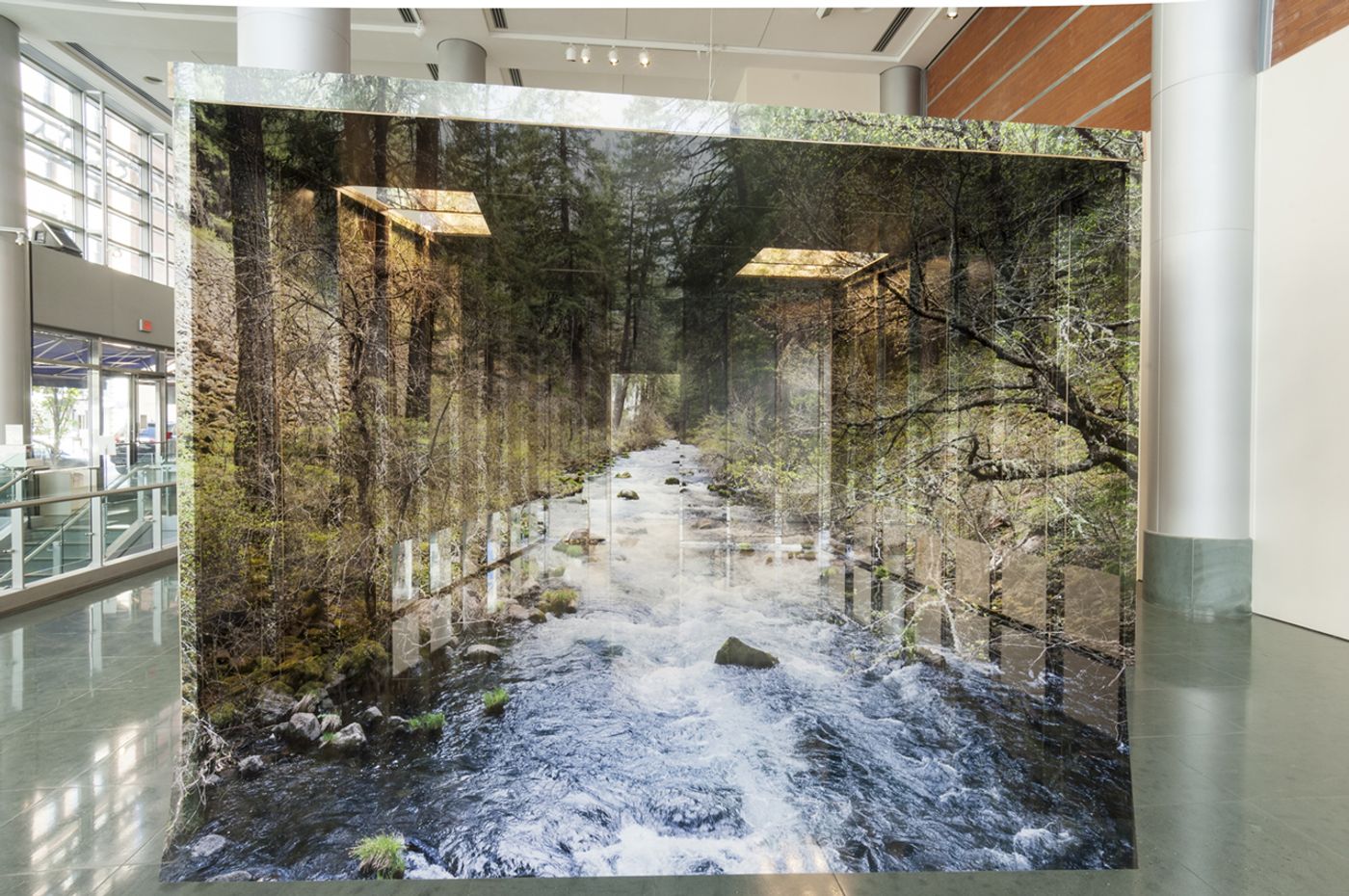
Chris Engman, Containment, 2018. Site-specific Installation, 131 x 304 x 493 in (332.7 x 772.2 x 1252.2 cm). Chris Engman’s "Containment" (2018) is a site-specific installation created as a part of FotoFocus Biennial 2018 exhibition "Chris Engman: Prospect and Refuge" at Alice F. and Harris K. Weston Art Gallery. Courtesy of the artist and Luis De Jesus Los Angeles. Photo by Tony Walsh.
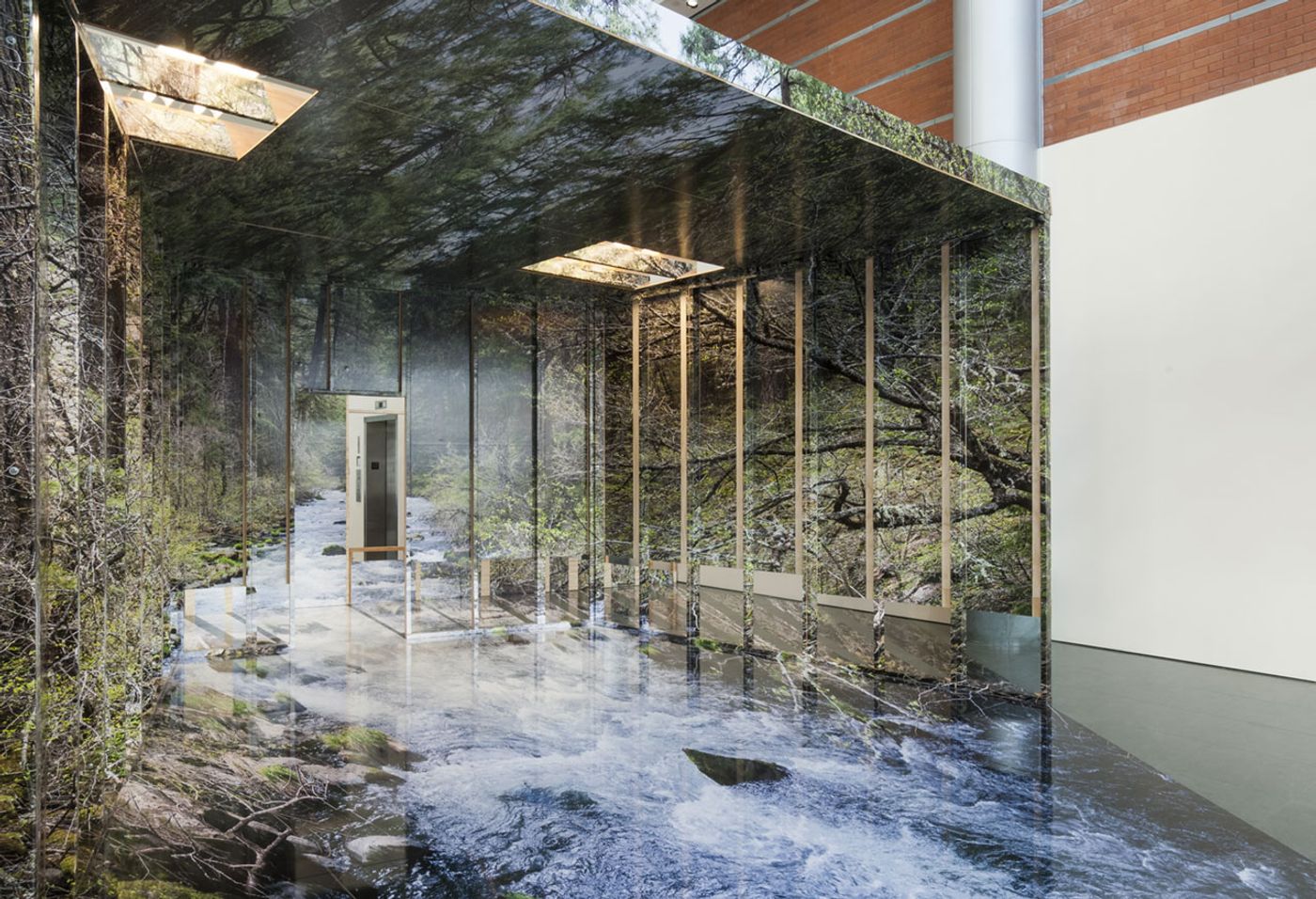
Chris Engman, Containment, 2018. Site-specific Installation, 131 x 304 x 493 in (332.7 x 772.2 x 1252.2 cm). Chris Engman’s "Containment" (2018) is a site-specific installation created as a part of FotoFocus Biennial 2018 exhibition "Chris Engman: Prospect and Refuge" at Alice F. and Harris K. Weston Art Gallery. Courtesy of the artist and Luis De Jesus Los Angeles. Photo by Tony Walsh.
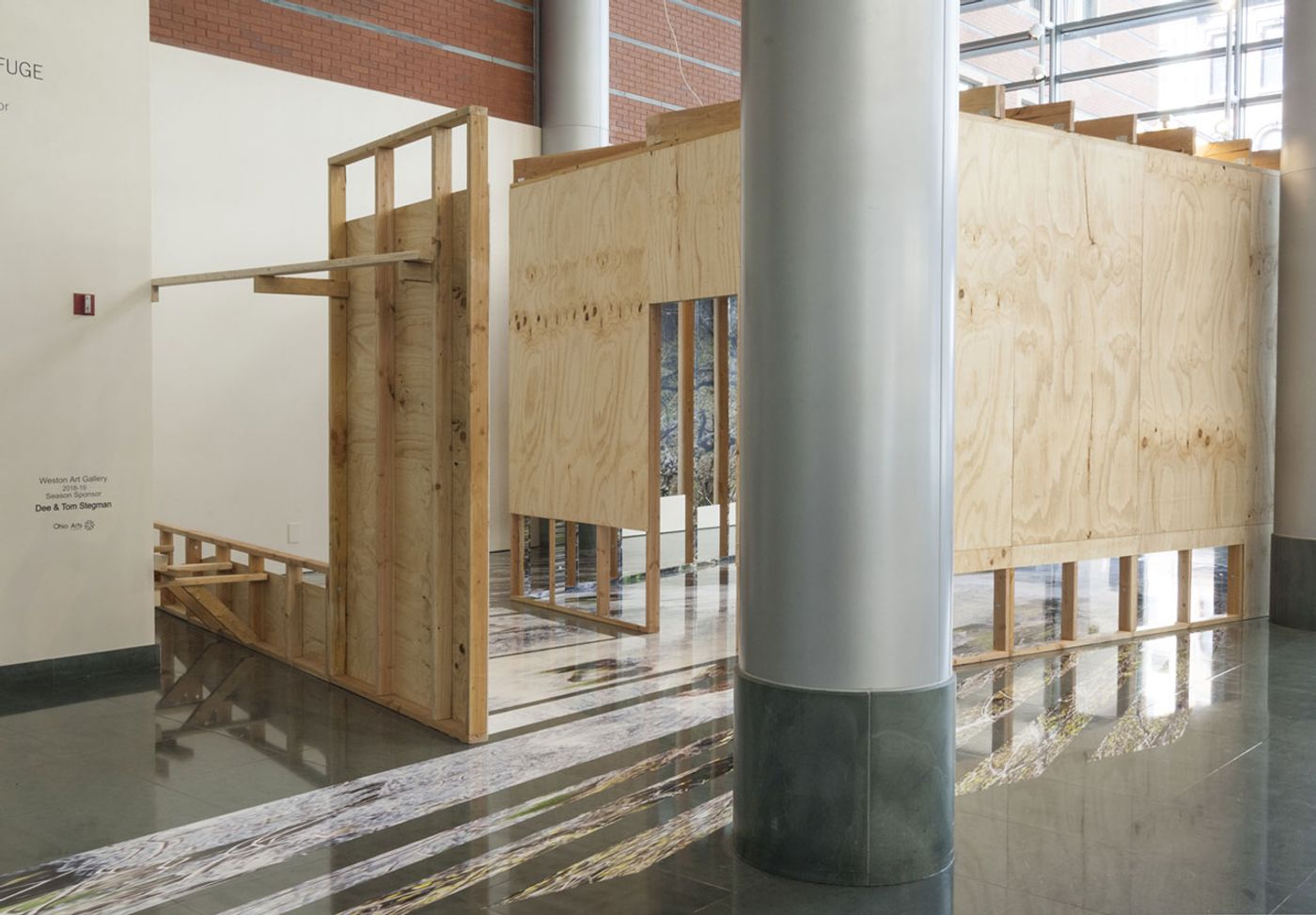
Chris Engman, Containment, 2018. Site-specific Installation, 131 x 304 x 493 in (332.7 x 772.2 x 1252.2 cm). Chris Engman’s "Containment" (2018) is a site-specific installation created as a part of FotoFocus Biennial 2018 exhibition "Chris Engman: Prospect and Refuge" at Alice F. and Harris K. Weston Art Gallery. Courtesy of the artist and Luis De Jesus Los Angeles. Photo by Tony Walsh.
Containment (2018), a new site-specific work created expressly for Cincinnati’s FotoFocus Biennial 2018 and exhibited at Cincinnati Arts Association’s Weston Art Gallery, provides a first time opportunity to experience Engman’s paradoxical landscapes in physical form by literally allowing visitors to step inside a photograph, or more precisely, more than three hundred photographs affixed to a timber structure. Playing with the visitors’ sense of depth and scale, the installation transports them to a verdant mountainous landscape where miraculously a stream is running under their feet. What distinguishes this piece from his printed work in the Prospect and Refuge series is that the artist’s trickery is in plain sight: as you progress inside the installation the landscape gradually becomes warped and disjointed shattering the illusion. But what is even more revealing is the fact that Engman’s laborious and detailed technique, which is completely inconspicuous in his two-dimensional work, can finally be appreciated, which ultimately makes Containment even more satisfactory.

Chris Engman, Equivalence, 2017. Edition of 6. Digital pigment print, 43 x 55.5 in (109.2 x 141 cm). Image courtesy of the artist and Luis De Jesus Los Angeles.
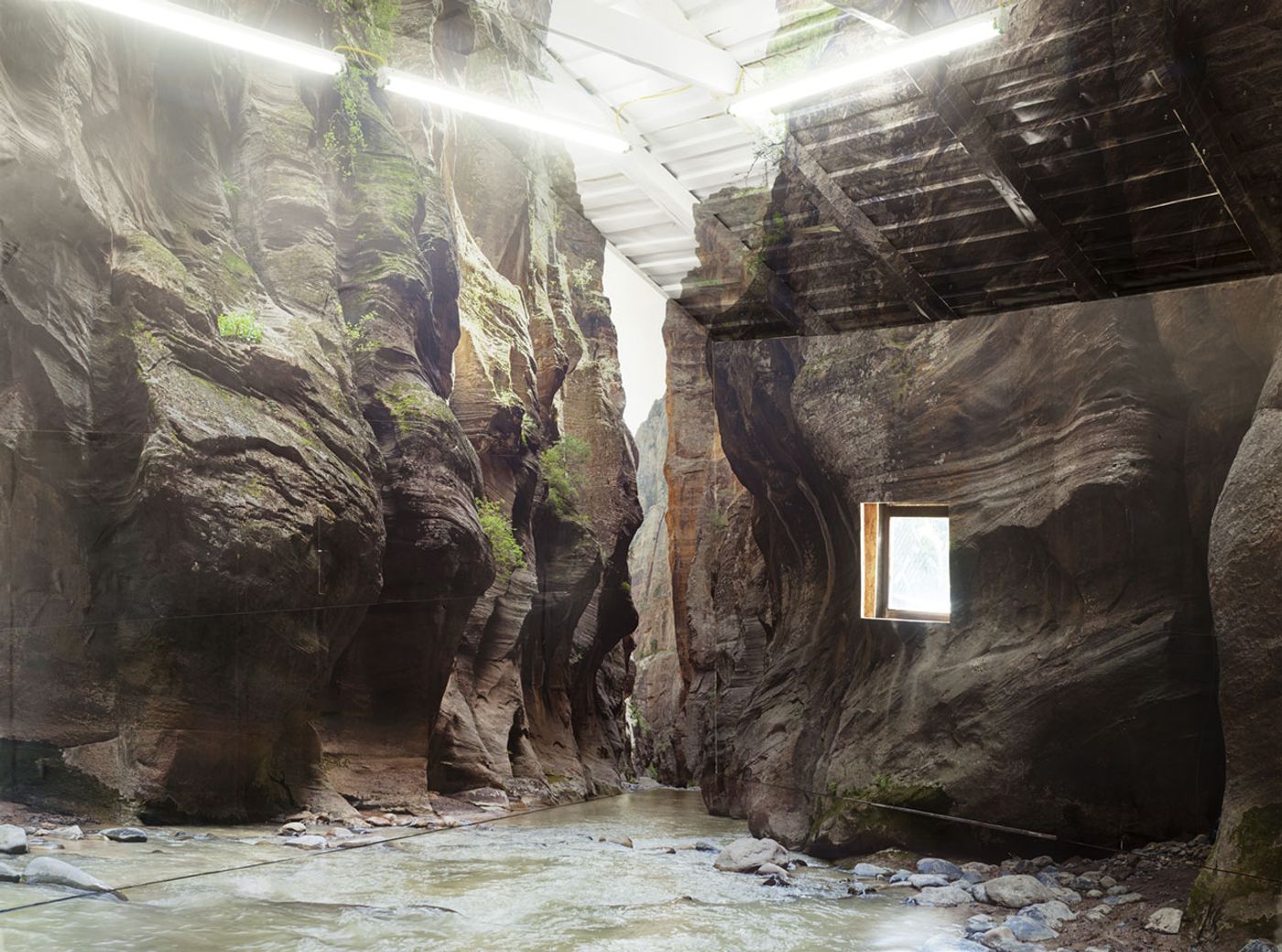
Chris Engman, Containment, 2015. Edition of 6. Pigment print, 43 x 58 in (109.2 x 147.3 cm). Image courtesy of the artist and Luis De Jesus Los Angeles.